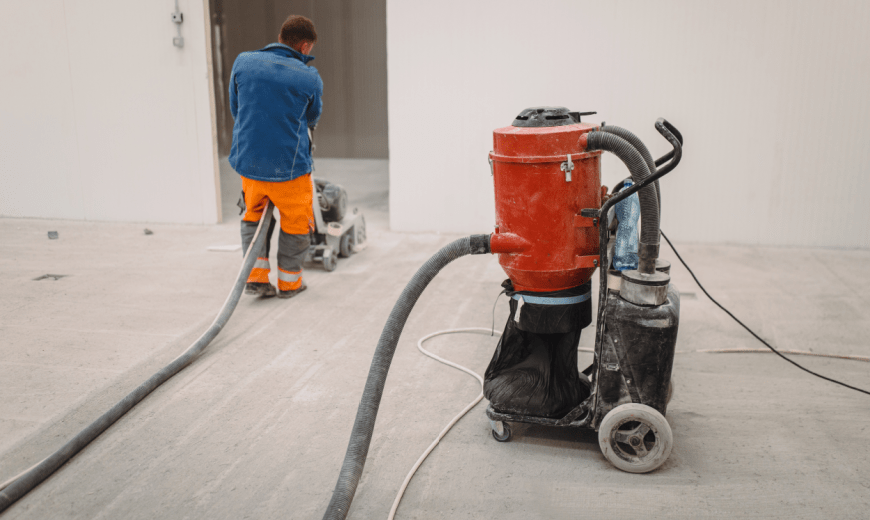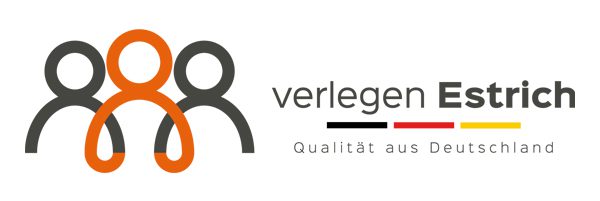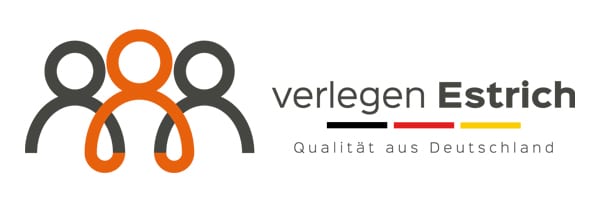Fräsen
Fräsen
Bei der Verarbeitung von Beton- und Estrichoberflächen ist eine sorgfältige Untergrundvorbereitung von großer Bedeutung. Insbesondere unebene oder verunreinigte Flächen erfordern eine gründliche Vorbereitung, bevor sie mit einem Bodenbelag versehen oder anderweitig weiter verarbeitet werden. Ein typischer Arbeitsschritt hierbei ist das Fräsen, das sowohl bei Sanierungen als auch bei Neubauten zum Einsatz kommt. Erfahren Sie hier, wie das Fräsen funktioniert, welchem Zweck es dient und welche Vorteile es bietet.
Wie funktioniert das Fräsen von Beton und Estrich?
Fräsen bedeutet nichts anderes als das Abtragen von Material und das kann sowohl eine ganze Fläche betreffen als auch einzelne Stellen im Boden. Voraussetzung für das Fräsen ist, dass der Beton vollständig ausgehärtet ist. Als Fräsen kommen entweder mit Hartmetall beschichtete Werkzeugwalzen oder Geräte mit rotierenden Diamantsegment-Scheiben zum Einsatz. Diese tragen von der Oberfläche mehrere Millimeter Beton ab, wenn sie über den Boden geschoben werden. Die Abtragungsmenge bzw. Tiefe lässt sich individuell einstellen. Zu erkennen ist ein gefräster Beton an den Rillen an der Oberfläche.

Welchem Zweck dient das Fräsen bei Estrich- und Betonböden?
Das Fräsen ist ein wichtiger Bestandteil der Untergrundvorbereitung, denn es dient wichtigen Zwecken: In erster Linie können Unebenheiten auf dem Boden beseitigt wie zum Beispiel kleinere Erhebungen im Beton oder eine bröckelige Oberfläche. Beim Fräsen wird die unebene Schicht abgetragen, sodass ein tragfähiger, glatter Boden zurückbleibt, auf den ein beliebiger Bodenbelag angebracht werden kann. Achtung: Die massive Bearbeitung von Böden durch Fräsen kann die Statik eines Gebäudes beeinflussen, deshalb ist es wichtig, solche Arbeiten von einer hierauf spezialisieren Firma durchführen zu lassen.
Auch großflächige Verunreinigungen (zum Beispiel alten Fliesenkleber, Ölrückstände oder Farbreste) lassen sich mit einer Fräse abtragen.
Neben der großflächigen Abtragung von Material zur Glättung und Reinigung des Bodens gibt es die Möglichkeit, die Fräse gezielt an bestimmten Stellen einzusetzen. Hier kommen in der Regel Handgeräte zum Einsatz, die zum Beispiel überstehende Ecken entfernen oder Schlitze in den Beton einfräsen. Diese Schlitze können dazu dienen, Rohre oder Kabel durch den Boden bzw. die Wand zu verlegen. Auch Dehnungsfugen lassen sich in den Boden fräsen.
Welche Vorteile bietet das Beton- und Estrich-Fräsen gegenüber anderen Verfahren?
Das Fräsen ermöglicht das Abtragen größerer Mengen Material, sodass es auch für stark beschädigten, sehr unebenen oder verunreinigten Boden geeignet ist. Bis zu 3 Zentimeter Beton lassen sich beim Fräsen entfernen. Damit eignet sich dieses Verfahren auch für die Entfernung dicker Beschichtungen wie zum Beispiel Polyurethan.
Da mit der Fräse größere Bereiche auf einmal bearbeitet werden können, ist diese Methode im Vergleich zu anderen Verfahren oft schneller und effektiver. Außerdem erlaubt sie einen feineren Schliff als zum Beispiel ein Presslufthammer und geht mit weniger Erschütterungen einher.
Darüber hinaus erlaubt nur das Fräsen präzise Schnitte in den Beton oder Estrich einzubringen, in die Kabel oder Rohre verlegt werden können.
Dank moderner Fräsmaschinen, die mit leistungsstarken Industriestaubsaugern kombiniert sind, wird der Staub, der beim Fräsen entsteht, sofort aufgesaugt, sodass kaum Schmutz in den bewohnten Bereich eindringen kann.
Ihr Fachbetrieb für Beton- und Estricharbeiten
Als Fachbetrieb für Beton- und Estricharbeiten übernehmen wir selbstverständlich auch das Fräsen von Beton- und Estrichböden. Mit unserer Expertise und langjährigen Erfahrung sorgen wir für die ideale Untergrundvorbereitung in Ihrem Projekt und das natürlich gewohnt zuverlässig und professionell. Sie haben Fragen zu unseren Leistungen oder möchten gerne ein konkretes Angebot erhalten? Dann zögern Sie nicht, uns zu kontaktieren und vereinbaren Sie einen Termin für ein persönliches Beratungsgespräch. Wir freuen uns darauf, Sie bei Ihrem Projekt mit Rat und Tat zu unterstützen!
Fragen und Antworten über das Fräsen
Nein, in manchen Fällen reicht es auch aus, die Oberfläche abzuschleifen, zum Beispiel vor dem Verputzen. Das Abschleifen ist materialschonender und erfordert kein neues Auftragen von Beton. Ob ein Fräsen nötig ist, ist jedoch von vielen Faktoren abhängig und deshalb in jedem Projekt individuell zu entscheiden.
Der Beton oder Estrich muss vollständig ausgehärtet sein, bevor Fräsarbeiten vorgenommen werden können. Je nach Estrichart kann dies bis zu 28 Tagen dauern.
Mit einer Fräse lassen sich auch nachträglich noch präzise Nuten in den Estrich einbringen, in die sich die Rohre der Fußbodenheizung verlegen lassen. Wichtig dabei ist, dass beim Fräsen die korrekten Abstände eingehalten werden.
Die Kosten hängen vor allem von dem Arbeitsaufwand ab, der sich aus der Größe und Oberflächenbeschaffenheit der Fläche ergibt. Gerne erstellen wir Ihnen ein individuelles Angebot für Ihr Projekt, nehmen Sie hierzu einfach Kontakt mit uns auf, wir freuen uns auf Ihre Nachricht.
Nein, auch wenn beide Begriffe manchmal synonym verwendet werden, handelt es sich hierbei um zwei verschiedene Arbeiten. Eine Betonfräse gelangt tiefer in das Gestein ein und trägt mehr Material ab als ein Schleifgerät. Darüber hinaus ist es möglich, Schlitze in den Beton zu fräsen, um darin beispielsweise Leitungen oder die Fußbodenheizung zu verlegen.
Das Schleifen ist dagegen materialschonender und eine gute Vorbereitung für das Verputzen. Insbesondere bei Sichtestrich ermöglicht das Schleifen ein ästhetisch ansprechendes Ergebnis. In vielen Fällen ergänzen sich Fräsen und Schleifen, sodass die beiden Arbeiten nacheinander durchgeführt werden.


